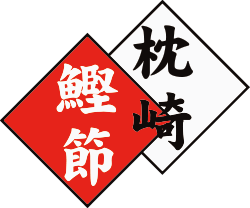"Dashi" has gained its popularity in the food scenes across the world
"Washoku", the traditional dietary cultures of the Japanese, favored by people around the world, has been added to the UNESCO's roster of Intangible Cultural Heritages in 2013. "Dashi" that delivers "Umami" by bringing out the flavors of the ingredients to the fullest plays a critical role in "Washoku" and is the very reason why "Washoku" is favored by many.
It is not an overstatement to say "Dashi" is the unsung hero of "Washoku". Western cuisine has its "Bouillon", "Fond", "Broth" and "Soup Stock" and the Chinese cuisine has its "Tang". The "Washoku" equivalent to these is "Dashi", made from ingredients such as smoked and dried skipjack called "Katsuobushi" and dried kelp called "Kombu".
The hub of the best "Katsuobushi", one of the essential ingredients of "Dashi", is in the Makurazaki region.
 About "Katsuo"
About "Katsuo"

About "Katsuo"
"Katsuo" is Striped tuna, Skipjack tuna, Oceanic bonito or technically called Katsuwonus pelamis or Linne.
This salt-water fish is found in the coast of Japan and the tropical and temperate sea zones across the world. "Katsuo" of "Katsuobushi" refers to the fish used in Japanese. "Katsuo" is widely known as the mother of "Dashi" in the Japanese food culture.
Katsuo's gill cover is stationary; therefore, it must swim to capture oxygen by running the sea water through its gill slits. "Katsuo" is a great swimmer because of its relatively high body temperature, as a result of its active metabolism. And this is largely due to how the Katsuo's blood vessel functions. Oxygen from the sea water that it captures through the gills is cold in temperature. Its blood vessel can transfer heat from its metabolism-warmed blood to the cold oxygen-rich blood; therefore, Katsuo's blood temperature can stay constant.









